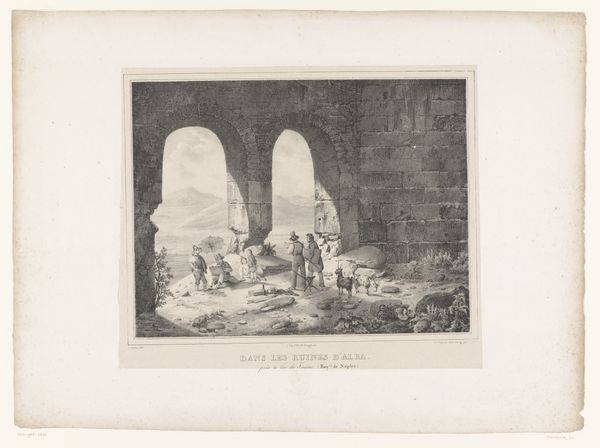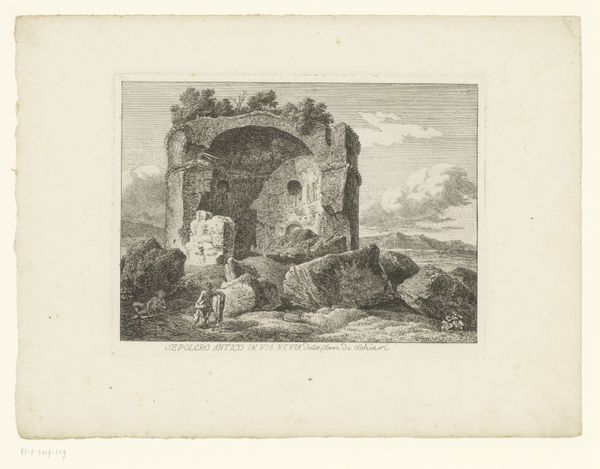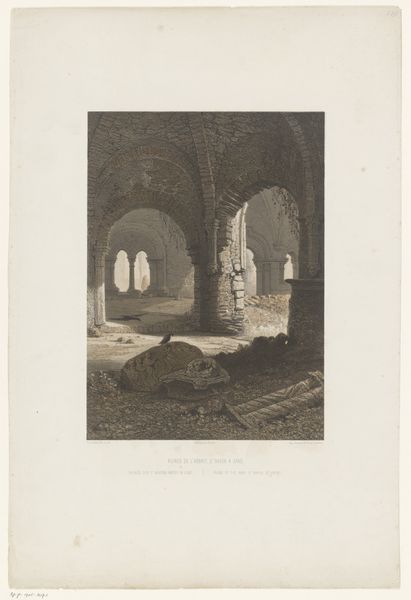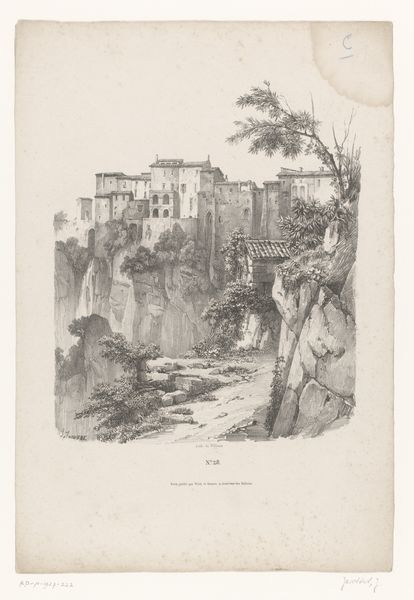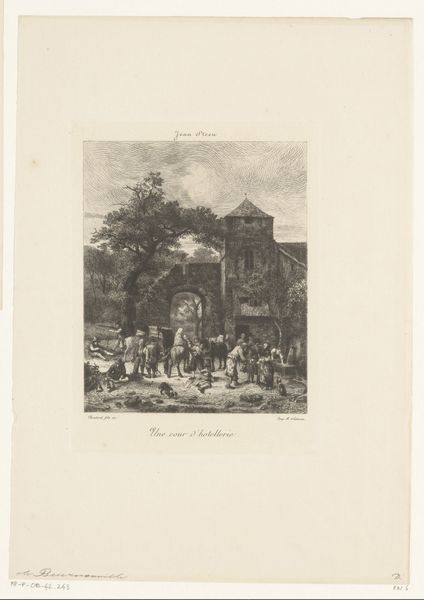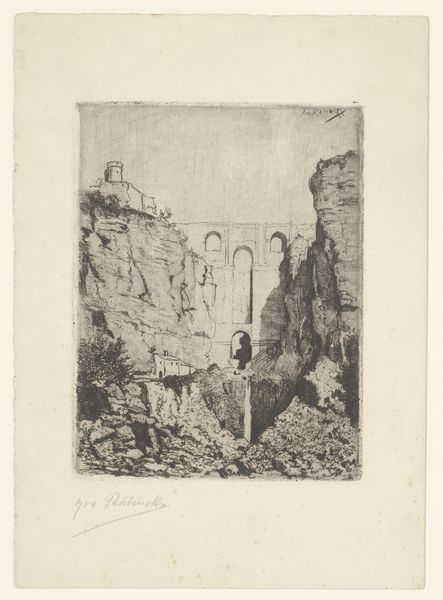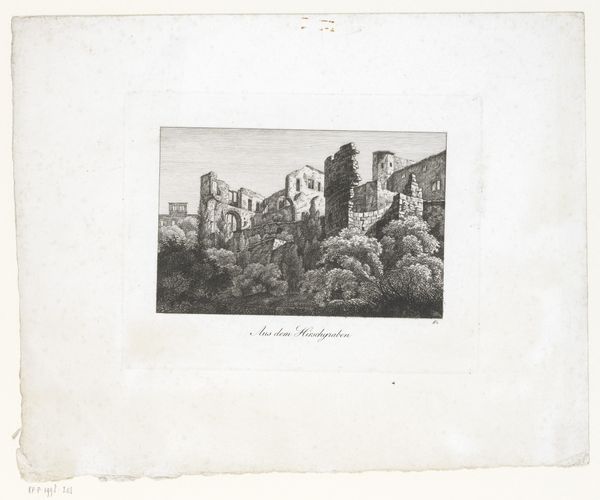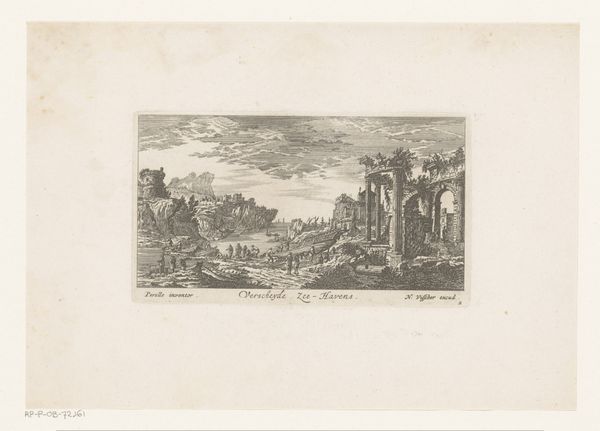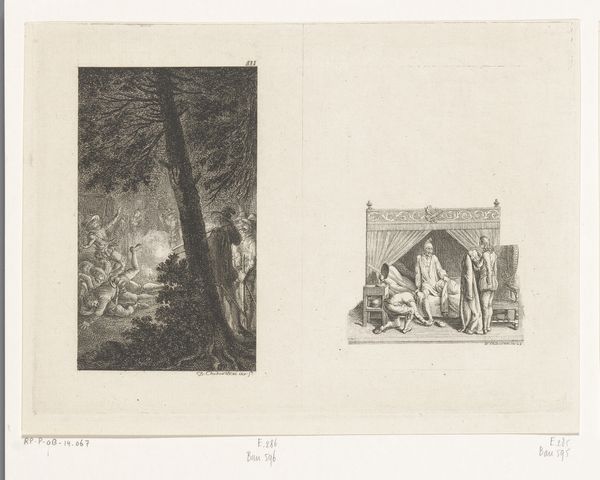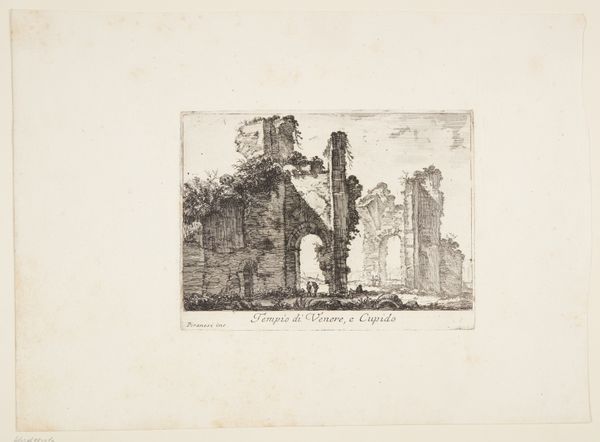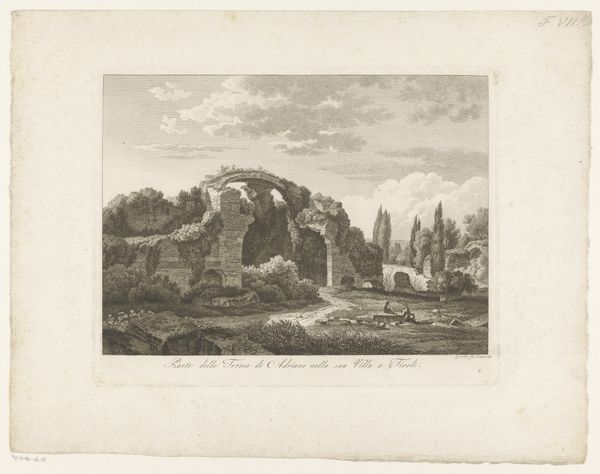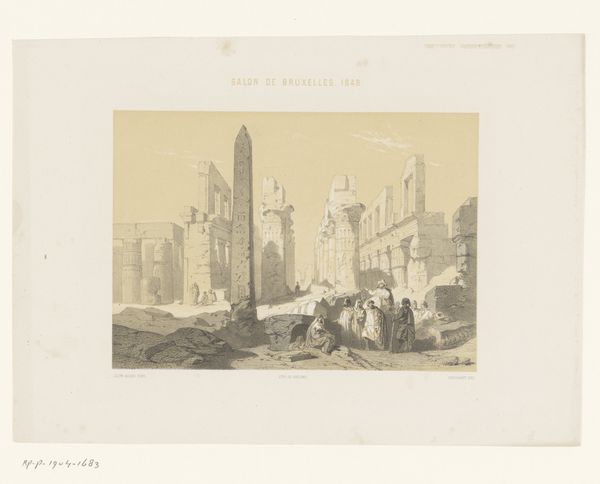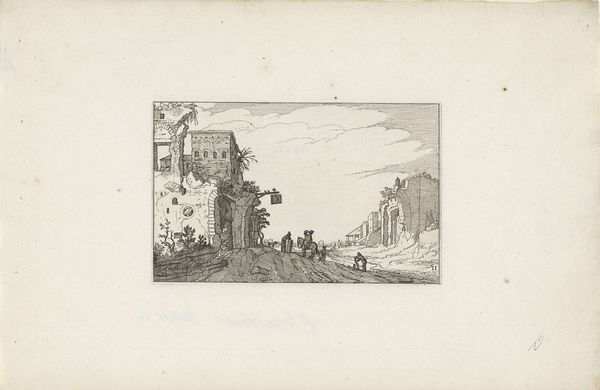
print, engraving
# print
#
landscape
#
romanticism
#
engraving
Dimensions: height 272 mm, width 357 mm
Copyright: Rijks Museum: Open Domain
Editor: This is “Ruins on the Island of Tinian in Oceania,” an engraving created in 1822. The artist is Jacques Etienne Victor Arago. The crumbling pillars definitely evoke a feeling of a bygone era. What draws your eye when you look at it? Curator: It is about visual storytelling and historical memory, and I find myself focusing on the pillars themselves. What stories do they hold, literally standing as silent witnesses? Think of what a pillar symbolizes - strength, support, even divinity. These particular ruins echo the remnants of classical temples, calling to mind Greece and Rome. But these aren't European ruins; they are in Oceania, and carry their own weight. Editor: I hadn’t thought about the link to classical architecture! Curator: Note, too, how Arago depicts them: worn, vine-covered, integrated into the natural landscape. Consider what these pillars represented when they were new, versus what they mean now in their state of ruin. Does it shift your perspective at all? Editor: Absolutely. I guess it emphasizes the transience of power and culture. The vegetation reclaiming the structures really underscores that point. Is that why the artist included people so small at the base? Curator: Exactly. It provides scale and hints at a certain humility. The insignificance of man compared to the vastness of time and the enduring power of nature is a common theme, connecting this image to the tradition of "romanticism." Editor: That’s fascinating! It’s like Arago is presenting us with not just ruins, but a meditation on history, time, and the cultural significance of these pillars. Thanks for pointing that out. Curator: Of course. It's amazing how an image, like a ruin, can speak volumes across centuries.
Comments
No comments
Be the first to comment and join the conversation on the ultimate creative platform.
